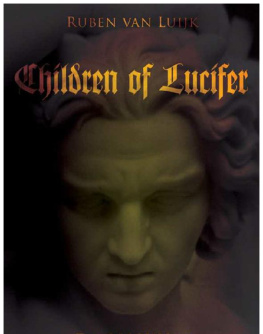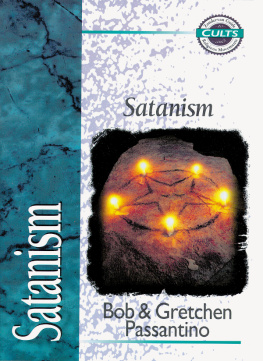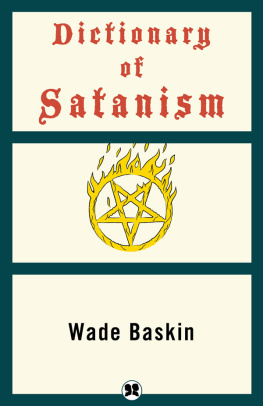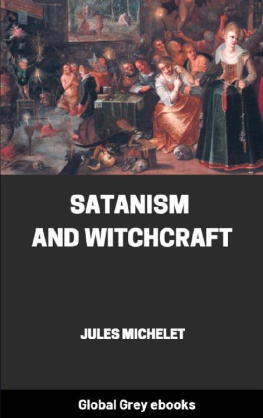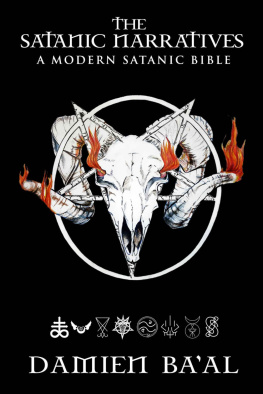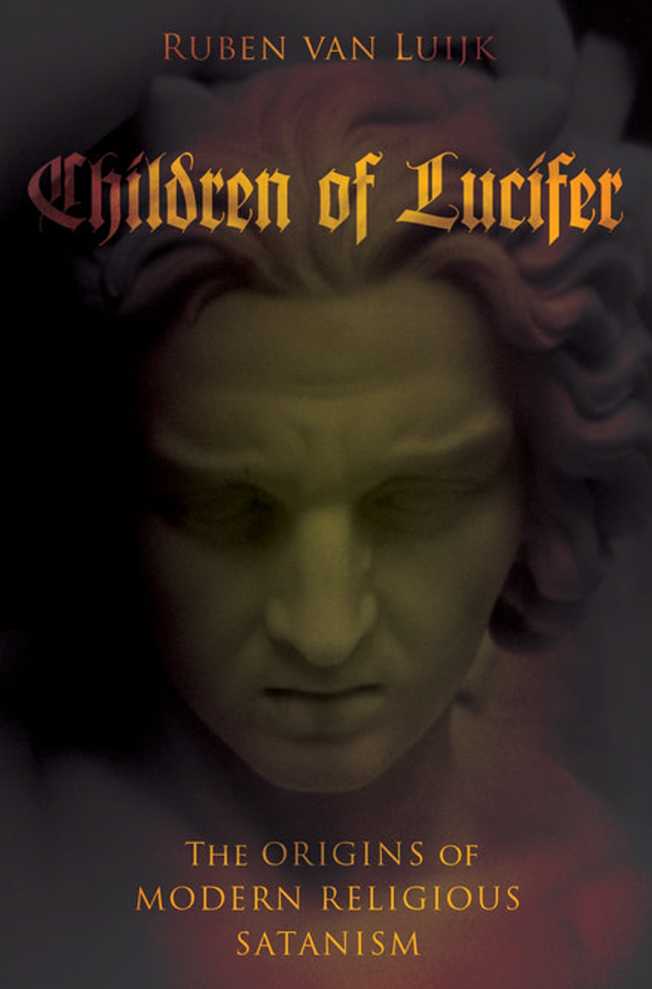Series Editor
Henrik Bogdan, University of Gothenburg
CHILDREN OF LUCIFER
The Origins of Modern Religious Satanism Ruben van Luijk
Children of Lucifer
THE ORIGINS OF MODERN RELIGIOUS SATANISM
Ruben van Luijk
OXFORD UNIVERSITY PRESS
Oxford University Press is a department of the University of Oxford. It furthers the Universitys objective of excellence in research, scholarship, and education by publishing worldwide. Oxford is a registered trade mark of Oxford University Press in the UK and certain other countries.
Published in the United States of America by Oxford University Press 198 Madison Avenue, New York, NY 10016, United States of America.
Oxford University Press 2016
All rights reserved. No part of this publication may be reproduced, stored in a retrieval system, or transmitted, in any form or by any means, without the prior permission in writing of Oxford University Press, or as expressly permitted by law, by license, or under terms agreed with the appropriate reproduction rights organization. Inquiries concerning reproduction outside the scope of the above should be sent to the Rights Department, Oxford University Press, at the address above.
You must not circulate this work in any other form and you must impose this same condition on any acquirer.
Library of Congress Cataloging-in-Publication Data Names: Luijk, Ruben van, author.
Title: Children of lucifer: the origins of modern religious satanism / Ruben van Luijk.
Description: New York: Oxford University Press, 2016. | Includes bibliographical references and index. Identifiers: LCCN 2015044388I ISBN 978-0-19-027510-5 (cloth: alk. paper) |
ISBN 978-0-19-027512-9 (epub)
Subjects: LCSH: SatanismHistory.
Classification: LCC BF1548.L85 2016 | DDC 133. 4/2209dc23 LC record available at http: //lccn. loc. gov/2015044388
Printed by Sheridan, USA
Contents
my first debt of gratitude is to Daniela Muller, who adopted and promoted the project of this study at an early date, when I was still a rather ragged and only recently graduated student, finding me an institutional home on more than one occasion. She is the real Doktorvater of this study, and I hope this publication justifies her unflinching trust. Next I would like to mention Theo Salemink, my copromoter, whose untiring enthusiasm and inexhaustible suggestions for new literature and new venues of investigation stimulated me immensely; in addition, his wizardry in circumnavigating certain practical hindrances proved essential in launching my research. Wouter Hanegraaff supported and supervised this project at an early stage: his acute criticism of my earliest chapters was of great value to me. When academic bureaucracy prevented him from continuing this role, he was replaced by Gerard Rouwhorst, who spared me many a headache by his unfailing references to literature on more theoretical issues.
Although an unlikely place for this research, the Faculty of Catholic Theology of Tilburg University at Utrecht provided me with a hospitable institutional bedding for pursuing my dark studies during the first five years of this project. When the harsh spirit of modern efficiency also engulfed this last oasis of academic respite, the Faculty of Philosophy, Theology, and Religious Studies of the Radbouduniversity at Nijmegen kindly opened its doors for me, thanks to generous financial support by the now-defunct interfaculty focus group for Culture, Religion, and Memory.
Finally I thank my inspiring colleagues in the Noster Werkgroep Nieuwe Spiritualiteit, especially Johanneke Berghuijs; the helpful personnel of all libraries, archives, and other institutions I consulted, in particular Rens Steenhard of the Vredespaleis at The Hague and Brigitte Hegelauer of Mission Eine Welt; Ab de Jong, Marcel Poorthuis, Hans de Waardt, Iris Gareis, Peter Paul Schnierer, Per Faxneld, Syds Wiersma, Michael Siefener, Annemarie
Bos, Burton H. Wolfe, and Olivier van Praag, for the help and information they gave me; Dr. Christina Pumplun, for reading Faust with me; Cyril Kuttiyanikkal and Lut Callaert, for being roommates; the two anonymous reviewers, for their comments that allowed me to add some final retouches; Celine Giron et Mortimer Malaise, pour leur hospitalite et amitie; and my parents, for their understanding, even when they couldnt always understand.
all translations from other languages in this publication are mine, unless otherwise noted in the notes. Unless otherwise noted, any emphasis within quoted texts is from the original.
Initial capitals within cited texts have been changed as the flow of my text demanded. For brevitys sake, gods and other (im)personal entities of mixed, neutral, or unknown sex are referred to as he or him. No theological or ideological statement is implied.
As is by now common usage in scholarly literature, I capitalize Satanism, in accordance with the English-language convention for denoting religions (compare Christianity, Judaism, Buddhism, etc. ). Except in specific cases, however, I have avoided the epithet Satanic for matters regarding Satanism (e. g., Satanist philosophy) because it literally signifies something belonging to or sharing traits with Satan and is commonly understood as diabolically evil.
The bibliography contains all the relevant publications I have consulted. Periodicals are listed separately, but primary and secondary sources have been compiled within one alphabetical list for quick consultation by inquiring readers. Archival sources and websites are listed in the notes only.
To ensure the readability of the text and because of the lack of a real status qastionis regarding many aspects of the history of Satanism, I chose, in most cases, to allocate discussions of specialized scholarly literature to the notes. Specialist readers should consult these, as they contain much additional information. Endnotes toward the beginning of a chapter or section list or discuss the most relevant literature regarding that particular topic.
What yesterday was still religion is no longer such today; and what to-day is atheism, tomorrow will be religion.
ludwig Feuerbach, The Essence of Christianity, trans. George Eliot
Introduction
---
walking through the university library one day, my eye fell on a pulp paperback entitled The Worlds Weirdest Cults. I immediately surmised that Satanism would be among the religions featured in the book. Indeed, seven of the sixteen chapters in the little book turned out to be centered on Satanist cults of one kind or another. 1 My hunch in this respect was not based on some eerie premonition. Authors of pulp paperbacks are by no means exceptional in considering Satanism among the worlds weirdest cults. To this day, the word Satanism conjures images of the bizarre, the sinister, the lurid, the monstrous, the perverse, and the downright evil. This attitude is reflected in much of the literature, both academic and nonacademic, that deals with the subject or happens to refer to it in passing and also in the reactions of many people, both academic and nonacademic, to whom I mentioned the subject I was working on.
Such associations naturally make Satanism an excellent tool for blackening other peoples reputations. Throughout history, persons and groups alleged to practice Satanism of some kind or another make up a long list, which includes the Essenes, 2 the Gnostics, 3 the Hindus, 4 the Jews and the Cathars, 5 the Templars, 6 the Goliards, 7 several medieval and early modern Roman Catholic popes, 8 adherents of tribal religions, 9 the Protestants and the Anabaptists, 10 John Milton, 11 Francois Henri de Montmorency-Bouteville, Marechal de Luxembourg, 12 Madame de Montespan, 13 the Illuminati, 14 the Presbyterians, 15 Robespierre, Marat, and Danton, 16 the Mormons, 17 the Rosicrucians, 18 magnetists and spiritists, 19 Giuseppe Mazzini and Giuseppe Garibaldi, 20 Otto von Bismarck, 21 Giacomo Leopardi, 22 Charles Baudelaire, 23 Grigori Rasputin, 24 the Chinese Tongs, 25 Karl Marx, 26 Friedrich Nietzsche, 27 the San Francisco Vigilantes, 28 Pope Pius IX and Pope Leo XIII, 29 Cardinal Mariano Rampolla, 30 Aleister Crowley, 31 J. R. R. Tolkien, 32 Robert Johnson, 33 Adolf Hitler, 34 the SS, 35 Julius Evola, 36 supporters of the New Age Movement, 37 the Wiener Aktionstheater, 38 the Beatles, 39 the Manson Family, 40 Communists, 41 McDonalds, 42 Procter & Gamble, 43 Walt Disney, 44 Cardinal Ratzinger, 45 and all American presidents since George Bush Sr. 46

